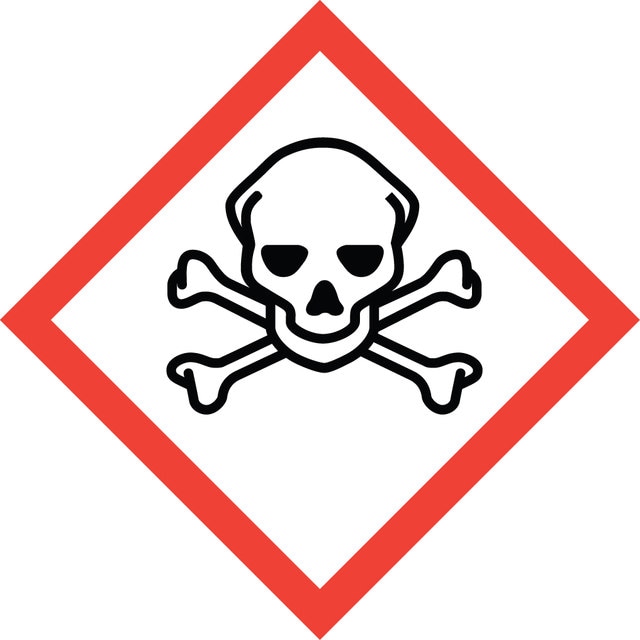Sign In to View Organizational & Contract Pricing
Select a Size
About This Item
Empirical Formula (Hill Notation):
C46H90O10PNa
CAS Number:
Molecular Weight:
857.16
MDL number:
UNSPSC Code:
12352211
NACRES:
NA.25
Product Name
4ME 16:0 PG, 1,2-diphytanoyl-sn-glycero-3-phospho-(1′-rac-glycerol) (sodium salt), chloroform
Assay
>99% (TLC)
form
liquid
packaging
pkg of 1 × 2.5 mL (850404C-25mg)
manufacturer/tradename
Avanti Research™ - A Croda Brand 850404C
concentration
10 mg/mL (850404C-25mg)
shipped in
dry ice
storage temp.
−20°C
General description
4ME 16:0 PG (DPhPG/1,2-diphytanoyl-sn-glycero-3-phospho-(1′-rac-glycerol)) is a negatively charged phospholipid. It has 16-carbon long hydrocarbon chains that are methyl-branched. It is a fatty acid modified lipid.
Application
4ME 16:0 PG (DPhPG/1,2-diphytanoyl-sn-glycero-3-phospho-(1′-rac-glycerol) (sodium salt)) may be used:
- as a phospholipid standard to quantify phosphatidylglycerol in plant samples by mass spectrometry analysis
- as a component of giant unilamellar vesicles (GUVs)for electrophysiology studies
- in the preparation of DPhPC (1,2-diphytanoyl-sn-glycero-3-phosphocholine/DPhPG vesicles
Biochem/physiol Actions
DPhPG/1,2-diphytanoyl-sn-glycero-3-phospho-(1′-rac-glycerol) is used in electrophysiological experiments.
Packaging
5 mL Clear Glass Sealed Ampule (850404C-25mg)
Legal Information
Avanti Research is a trademark of Avanti Polar Lipids, LLC
Signal Word
Danger
Hazard Statements
Precautionary Statements
Hazard Classifications
Acute Tox. 3 Inhalation - Acute Tox. 4 Oral - Aquatic Chronic 3 - Carc. 2 - Eye Irrit. 2 - Repr. 2 - Skin Irrit. 2 - STOT RE 1 - STOT SE 3
Target Organs
Central nervous system, Liver,Kidney
WGK
WGK 3
Regulatory Information
新产品
This item has
Choose from one of the most recent versions:
Already Own This Product?
Find documentation for the products that you have recently purchased in the Document Library.
Extraction and profiling of plant polar glycerol lipids
Liu Y and Wang X
Bio-protocol, 6, 1849e-1849e null
Max Lein et al.
Biochimica et biophysica acta, 1848(11 Pt A), 2980-2984 (2015-09-08)
The mechanism(s) by which certain small peptides and peptide mimics carry large cargoes across membranes through exclusively non-covalent interactions has been difficult to resolve. Here, we use the droplet-interface bilayer as a platform to characterize distinct mechanistic differences between two
Hanieh Niroomand et al.
Scientific reports, 7(1), 2492-2492 (2017-06-01)
The role of natural thylakoid membrane housing of Photosystem I (PSI), the transmembrane photosynthetic protein, in its robust photoactivated charge separation with near unity quantum efficiency is not fundamentally understood. To this end, incorporation of suitable protein scaffolds for PSI
Giorgia Manzo et al.
Scientific reports, 9(1), 10934-10934 (2019-07-31)
Frogs such as Rana temporaria and Litoria aurea secrete numerous closely related antimicrobial peptides (AMPs) as an effective chemical dermal defence. Damage or penetration of the bacterial plasma membrane is considered essential for AMP activity and such properties are commonly
Sezgin Kara et al.
Biochimica et biophysica acta. Biomembranes, 1859(10), 1828-1837 (2017-06-08)
The branched chains in diphytanoyl lipids provide membranes with unique properties, such as high chemical/physical stability, low water permeability, and no gel-to-fluid phase transition at ambient temperature. Synthetic diphytanoyl phospholipids are often used as model membranes for electrophysiological experiments. To
Our team of scientists has experience in all areas of research including Life Science, Material Science, Chemical Synthesis, Chromatography, Analytical and many others.
Contact Technical Service
